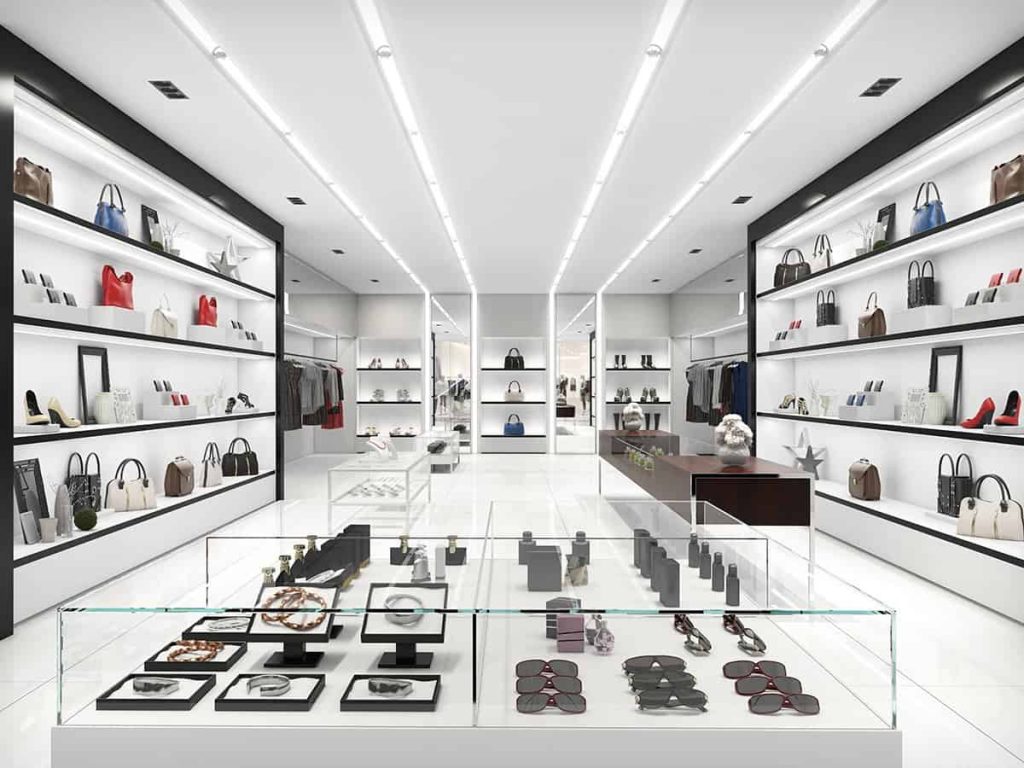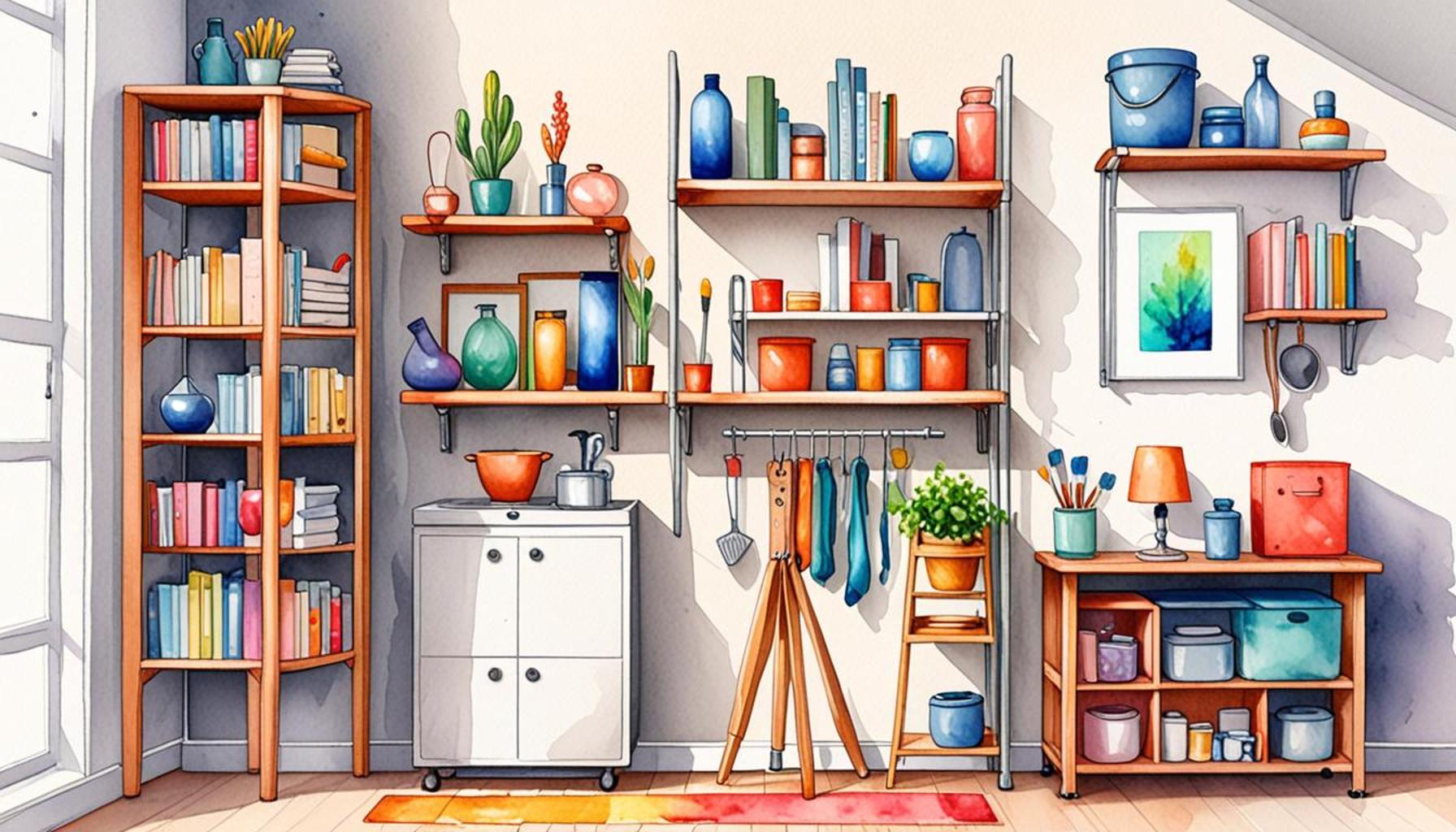The Importance of Lighting in Space Optimization: Creating Pleasant and Functional Environments

The Power of Lighting in Design
In the journey to enhance the quality of our living and working environments, lighting plays a pivotal role. It’s not just about visibility; it’s about creating a space that invokes positivity and productivity. Well-thought-out lighting can transform the most mundane of spaces into inviting areas that serve multiple purposes. The correct use of lighting can significantly alter the ambiance and utility of any room, making it a crucial element in interior design.
Different types of lighting can sharply influence various aspects of design:
- Natural Light: Often considered the gold standard in lighting, natural light maximizes energy efficiency and promotes well-being. Proper window placement, skylights, or light tubes can draw in sunlight, reducing reliance on artificial sources.
- Ambient Lighting: This type of lighting offers general illumination and sets the mood for any space. Using fixtures such as chandeliers, floor lamps, or recessed lights can create a warm and welcoming feel, essential in homes, restaurants, and offices alike.
- Task Lighting: This is crucial for focus-intensive tasks. Properly directed task lighting, like desk lamps or under-cabinet lights in kitchens, provides the illumination needed for activities such as reading, cooking, or crafting, helping to avoid eye strain and enhancing efficiency.
In Nigeria, a country rich in culture and tradition, the right lighting can beautifully complement various aesthetics while ensuring functionality. For instance, a bustling Lagos office may benefit from a blend of ambient and natural light to maintain an energetic vibe, whereas a serene Abuja home might embrace softer, more intimate lighting to create a relaxing sanctuary. Both settings reflect how effective lighting can significantly influence how we perceive and interact with our environments.
Moreover, optimizing light can lead to numerous benefits:
- Improved mood and motivation, as light has a profound impact on our psychological state and can alleviate feelings of lethargy.
- Enhanced functionality of spaces, where the correct lighting design can make areas more usable and enjoyable.
- Energy savings through intelligent lighting choices, which can help reduce electricity bills, especially in homes and businesses striving for sustainability.
As we explore the interplay between lighting and space optimization, it becomes evident that strategic lighting solutions can create environments that are not only visually appealing but also incredibly practical. By integrating various lighting sources effectively, individuals can create spaces that not only meet aesthetic desires but also cater to functional needs, ultimately enhancing their overall living experience.

With ongoing advancements in LED technology and smart lighting solutions, there has never been a better time to rethink how we illuminate our spaces in Nigeria. As the blend of tradition and modernity continues to shape our environment, embracing innovative lighting strategies can enhance our way of life, making every interaction with our surroundings more enriching.
RECOMMENDED: Check out this similar article
Illuminating Spaces: The Intersection of Style and Functionality
As urban landscapes evolve, especially in bustling cities like Lagos and Abuja, the way we design our interiors must also adapt to the changing lifestyle of its inhabitants. Fundamentally, lighting serves as a key component in maximizing space optimization, helping to create environments that are both aesthetically pleasing and highly functional. Whether it’s a cozy nook in a home or an open-plan office, each space presents unique challenges and opportunities in lighting design.
The relationship between lighting and space cannot be overstated. Strategic illumination not only accentuates architectural features but also influences how individuals utilize and navigate their surroundings. For instance, the correct lighting in a small apartment can create the illusion of spaciousness, while poor lighting can lead to a cramped and uninviting atmosphere. Here are several ways in which lighting can enhance space:
- Highlighting Functionality: Different activities require different lighting conditions. A well-lit kitchen is essential for cooking, while a softly lit living room encourages relaxation. By tailoring lighting to specific functional areas, designers can elevate the practicality of a space.
- Creating Visual Flow: The transition between spaces is often marked by different light levels. Ensuring that light flows from one area to another—such as from a brightly lit hallway to a more dimly lit bedroom—can create a harmonious experience that guides individuals through the space effortlessly.
- Emphasizing Design Elements: Lighting can play a crucial role in showcasing artwork or architectural details. Spotlights or track lighting can draw the eye to certain features, adding depth and character to the design.
In Nigeria, where cultural nuances and traditions need to be respected in interior layouts, the importance of understanding the implications of lighting is further amplified. A gallery space exhibiting local art can benefit from adaptable lighting systems, which allow curators to set the right tone for different exhibits, while a modern office in Victoria Island may use ambient and task lighting to enhance productivity and morale among employees. The right balance of natural and artificial light is crucial as a means to reduce energy consumption, making sustainability a priority in contemporary design.
Moreover, the concept of lighting as a design tool trails into psychological impacts. Research indicates that well-lit areas contribute to improved mood, increased alertness, and higher productivity levels. Therefore, understanding how to apply lighting in various environments is not just a matter of aesthetics; it is fundamental to human experience and interaction.
As we delve further into the evolving world of lighting design, it becomes increasingly evident that these elements are not merely about brightness, but about embracing the synergy between practicality and beauty. By considering both the emotional and functional roles of lighting, we can transform spaces into thriving environments that enhance both life and work.
The Role of Natural Light
Natural light plays a pivotal role in enhancing the ambiance and functionality of spaces. Exposure to sunlight not only elevates mood but also contributes to overall well-being. Studies have shown that environments filled with natural light can boost productivity, creativity, and even reduce stress levels among individuals. By maximizing windows and utilizing reflective surfaces, homes and commercial spaces can harness this free resource. Implementing large windows, skylights, and light wells can significantly improve the intake of natural light. Furthermore, the orientation of the building in relation to the sun must be considered during the design phase to ensure that maximum light penetration occurs during the day. This not only helps in energy conservation but also enhances the aesthetic appeal of the space.
Artificial Lighting Solutions
While natural light is crucial, artificial lighting is equally important, especially in areas that lack sufficient daylight. The selection of the right artificial lighting fixtures is essential in creating a balanced and inviting atmosphere. Ambient, task, and accent lighting must be strategically designed to cater to the specific needs of each area. For instance, adjustable LED lights can serve multiple purposes, offering the flexibility to change brightness levels according to activities being performed. In workspaces, combining ambient light with task lighting not only optimizes visibility but also significantly reduces eye strain. Smart lighting systems that adjust automatically based on the time of day or occupancy can further elevate the efficiency of lighting in any environment.
Color Temperature and Mood
The color temperature of light significantly impacts the mood and atmosphere of a space. Warmer tones create a cozy and welcoming environment, perfect for living rooms and bedrooms, while cooler hues promote alertness and concentration, making them ideal for offices and study areas. The psychological effect of color temperature can be harnessed through thoughtful lighting choices to foster the right environment for various activities. Lighting, when executed thoughtfully, not only enhances the functionality of spaces but also allows individuals to enjoy their environments in new ways. With increasing awareness around the importance of lighting in space optimization, it is essential to explore innovative and effective design practices that cater to both aesthetic and practical needs.
| Category | Key Features |
|---|---|
| Natural Light Utilization | Enhances mood, boosts productivity, reduces stress |
| Artificial Lighting Solutions | Adjustable LEDs, smart systems, energy-efficient |
| Color Temperature Impact | Influences atmosphere and mood, enhances functionality |
YOU MAY ALSO LIKE: Read read another article
Enhancing Spaces through Thoughtful Lighting Design
The integration of lighting into space optimization is not merely a matter of illuminating interiors; it is about crafting unique environments that foster productivity, relaxation, and creativity. Every space, whether residential or commercial, has specific lighting requirements that influence how people interact with their surroundings. Recognizing the diverse functions of different environments is essential when considering lighting design.
Natural Light vs. Artificial Light plays a pivotal role in effective lighting strategies. In Nigeria’s tropical climate, maximizing natural light not only provides an energy-efficient lighting solution but also enhances the overall ambiance of living spaces. Large windows and open layouts can usher in abundant daylight, which has been shown to improve well-being and performance. The strategic placement of reflective surfaces, such as mirrors or light-colored walls, can further amplify natural light, creating a sense of airiness within compact areas.
Conversely, evenings may demand thoughtful artificial lighting schemes. With the prevalence of evening activities in urban centers, such as dining or social gatherings, employing layers of lighting becomes crucial. These layers can be composed of ambient, task, and accent lighting. For instance, a dining area should feature warm ambient lighting that invites social interaction, while task lighting over the dining table ensures sufficient brightness for dining experiences. Understanding these nuances allows designers to tailor lighting solutions to fit the essence of each space while observing cultural dynamics.
Moreover, the impact of color temperature cannot be overlooked. Different color temperatures – ranging from warm yellows to cool blues – evoke various feelings and can drastically alter the perception of a space. Warmer tones create a cozy and intimate atmosphere, making them well-suited for bedrooms and lounges. In contrast, cooler tones are invigorating and can help sustain concentration in work environments, such as offices and study areas. By adeptly utilizing these temperature variations, interior designers can cultivate environments that align with the intended function of each space.
Furthermore, today’s technology allows for a greater level of control over lighting than ever before. Smart lighting systems optionally supported by mobile applications give users the ability to adjust brightness, color temperature, and even illumination patterns at their fingertips. This adaptability not only caters to individual preferences but also accommodates changing activities throughout the day. In a Nigerian context, families can enhance their home experience seamlessly, transitioning from bright task-lighting during meal preparations to soft hues during movie nights.
Additionally, the significant role of environmental considerations in lighting design cannot be disregarded. In urban areas where energy efficiency is paramount, incorporating sustainable lighting solutions such as LED fixtures can reduce energy consumption while still delivering high-quality illumination. The Nigerian government’s increasing focus on sustainability promotes innovations in lighting. Strategic investments in renewable energy sources can empower homes and businesses alike to create aesthetically pleasing, functional, and environmentally friendly environments.
Thus, as the conversation surrounding lighting and space optimization continues to evolve, it becomes clear that the choices we make today not only influence our immediate surroundings but also have far-reaching implications for our health, productivity, and well-being in the future. The art of marrying design with purpose ensures that our environments are not just spaces—but places that inspire.
LEARN MORE: This related article may interest you
Conclusion: Illuminating the Path to Innovative Spaces
The significance of lighting in space optimization extends beyond aesthetics; it creates environments that are not only functional but also emotionally enriching. As we’ve explored, the interplay between natural and artificial light informs the well-being of inhabitants, impacting everything from mood to productivity. In Nigeria’s vibrant landscape, where daylight can ebb and flow throughout the year, maximizing natural light proves advantageous, enhancing both comfort and energy efficiency.
Furthermore, the ability to manipulate color temperature allows for personalization in diverse settings—define productivity in offices and relaxation in homes with a simple shift in hue. The advent of technology, particularly smart lighting systems, revolutionizes our interaction with light, providing tailored solutions that adapt to our lifestyles and preferences. Such advancements not only meet individual needs but also promote sustainability in a rapidly urbanizing Nigeria.
As we move forward, it is imperative for designers, homeowners, and businesses to consider the comprehensive benefits that a well-thought-out lighting plan can offer. By highlighting the importance of lighting in creating pleasant and functional environments, we encourage a deeper engagement with our spaces, inspiring a lifestyle that values emotional well-being alongside productivity.
In conclusion, the challenge remains clear: to craft spaces that transcend mere function, employing lighting as a vital tool to foster human connections, environmental consciousness, and enriched living experiences. Let us illuminate our environments thoughtfully and intentionally, shaping not just the look of our spaces, but the quality of life within them.



